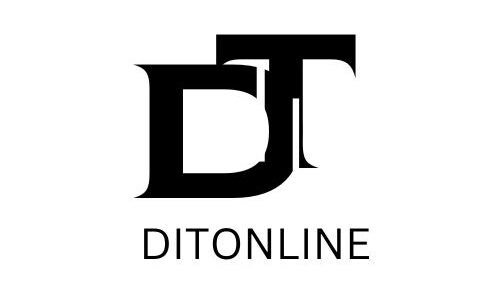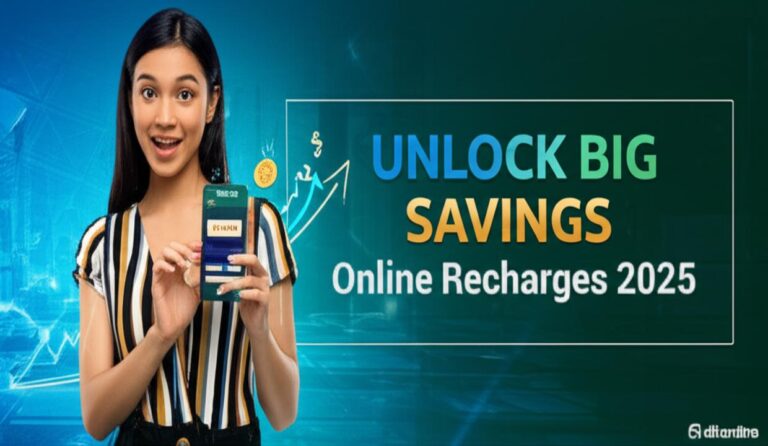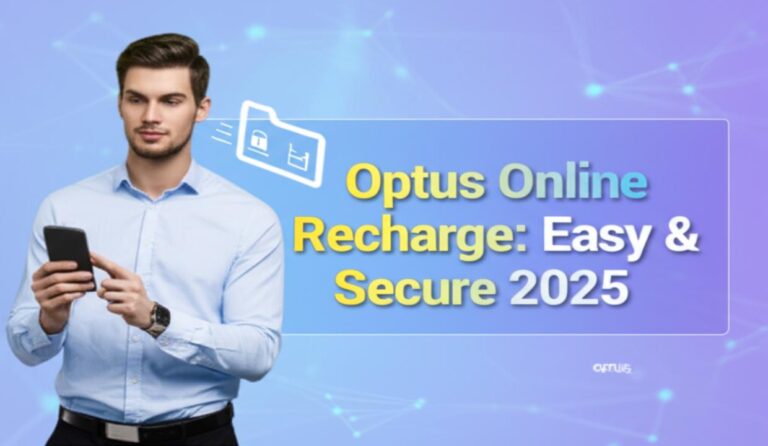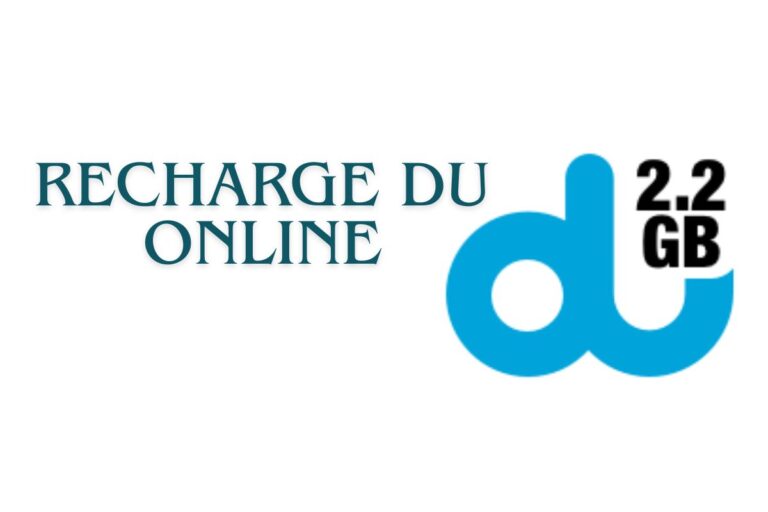Seamless Online Recharge: Your Go-To Guide for 2025 Digital Payments
Hello! Welcome to ditonline, your trusted source for digital recharge and tech updates.
In our fast-paced world, staying connected is no longer a luxury; it’s a fundamental need. From chatting with family to attending online classes, or even running a business, our devices and services demand constant power and connectivity. This is where online recharge steps in, transforming how we pay for essential services. Gone are the days of rushing to a physical store or scrambling for loose change. Today, a few taps on your smartphone can top up your mobile, renew your DTH subscription, or pay your electricity bill. It’s about instant convenience and absolute control. This guide will walk you through everything you need to know about making your next mobile top-up or service payment effortlessly, securely, and smartly.
| Recharge Category | Common Uses | Availability on Digital Platforms |
|---|---|---|
| Mobile Recharge | Prepaid/Postpaid plans, talk-time, data packs | Widely available |
| DTH Recharge | Satellite TV subscriptions | Widely available |
| Data Card Recharge | Internet dongle top-ups | Commonly available |
| Electricity Bill Payment | Monthly utility bill payment | Widely available |
| Broadband Recharge | Home internet plans | Commonly available |
Understanding Online Recharge: A Digital Revolution
The landscape of payments has dramatically shifted, making online recharge an integral part of modern life. It refers to the process of topping up various services like mobile phones, DTH, data cards, or paying utility bills, all through digital channels. Instead of visiting physical outlets, users can complete these transactions from their homes or on the go. This evolution is not just about convenience; it reflects a broader global move towards digital payment methods. Projections show global eCommerce sales are booming, expected to hit an astounding $7.5 trillion in 2025. This is a significant jump from $5.7 trillion in 2023, showcasing a 31% increase in just two years. Such growth underscores how deeply digital transactions are embedded in our daily routines. Moreover, a staggering 85% of global consumers now shop online, with nearly a third of the world’s population actively engaging in digital commerce. This immense adoption rate highlights the importance and ubiquity of digital services, including seamless online recharge. It’s clear that the digital way is becoming the only way for many.
What is Online Recharge?
At its core, online recharge is the process of purchasing credit or paying bills for various services using internet-enabled devices. This includes your smartphone, tablet, or computer. It covers a wide array of services. Think about topping up your prepaid mobile phone balance or renewing your monthly DTH subscription for entertainment. It also extends to paying your electricity bill, your water bill, or even your broadband connection fees. The key benefit is immediacy and accessibility. You can do it at any time, day or night, from virtually any location. This eliminates geographical barriers and time constraints associated with traditional payment methods. The convenience factor alone has driven massive adoption across diverse demographics. For busy individuals or those in remote areas, it’s a game-changer.
Why Has Online Recharge Become Essential?
The shift towards online recharge isn’t just a trend; it’s a fundamental change driven by evolving consumer habits and technological advancements. One major reason is the decline of cash. In developed countries, cash now makes up only 7% of spending, and it’s just 16% in developing markets. This indicates a strong preference for digital transactions. Furthermore, 9 out of 10 consumers have already adopted digital payments in some form. This widespread use points to a clear preference for speed and ease. The ability to perform a mobile top-up or pay a bill instantly, without queues or travel, saves valuable time. It also offers more control, allowing users to track expenses and choose from various payment options. The security features built into modern platforms also instill confidence. These factors combine to make online recharge not just convenient, but truly essential for managing daily finances.
How Online Recharge Works: The Seamless Process
Understanding the mechanics behind online recharge can demystify the process and boost your confidence in using digital payment methods. Fundamentally, it involves a secure digital handshake between you, your chosen payment platform, and the service provider. When you initiate a recharge, your payment platform acts as an intermediary, verifying your details and securely transmitting your payment. This entire process is often completed within seconds, thanks to sophisticated backend technology. Real-time payment networks, now active in 61 countries, play a crucial role in enabling these instant fund transfers. These networks are vital for seamless online recharge and global commerce. Imagine needing to send money for a family member’s mobile top-up in another city; real-time payments make that possible instantly. It showcases how interconnected and efficient our digital financial systems have become, facilitating millions of transactions daily with remarkable speed and reliability.
Step-by-Step Guide to a Successful Top-Up
Performing an online recharge is remarkably straightforward. First, you choose your preferred platform, whether it’s a dedicated payment app or your service provider’s website. Then, you select the service you wish to recharge or the bill you want to pay. For example, if it’s a mobile top-up, you’d enter the phone number and select the operator. Next, you choose the amount or plan you need. The platform will then present various digital payment methods. These can include debit cards, credit cards, digital wallets, or even UPI. You input your payment details, confirm the transaction, and typically receive an instant confirmation. The entire process often takes less than a minute. This simplicity and speed are why millions of users trust online recharge for their daily needs. It truly brings the power of financial transactions right to your fingertips, simplifying mundane tasks.
The Technology Behind Instant Payments
Behind every swift online recharge transaction lies a complex network of advanced technology. Encryption is paramount, ensuring your financial data is scrambled and secure during transmission. Payment gateways act as secure bridges, connecting your bank or digital wallet to the merchant or service provider. Tokenization further enhances security by replacing sensitive card data with unique, non-sensitive tokens. This means your actual card number is never stored by the merchant. The rise of mobile point-of-sale (POS) transactions is also a huge factor. These are expected to reach $12.56 trillion globally by the end of 2025. This highlights the growing dominance of mobile-first payment experiences. Furthermore, technologies like AI are increasingly used for fraud detection, protecting both consumers and providers. This ensures that every digital payment is not only fast but also incredibly secure. Without these technological backbone components, the seamless experience of modern digital payment methods would simply not be possible.
Popular Platforms and Their Innovations
The market for online recharge and digital payment methods is bustling with various platforms, each vying for user attention with innovative features. Globally, established players like PayPal, Google Pay, Apple Pay, and regional giants like Paytm (India) or WeChat Pay (China) dominate. These platforms offer a comprehensive suite of services. They go beyond simple mobile top-up to include bill payments, money transfers, and even investment options. Their success lies in user-friendly interfaces and robust security. For instance, integrated in-app payments have significantly boosted user engagement. Social platforms like Instagram, TikTok, and YouTube have expanded their shopping capabilities with seamless in-app payments, seeing a 35% increase in user engagement in 2025. This integration makes purchasing and topping up services an intuitive part of the browsing experience, blurring the lines between social interaction and commerce. Users appreciate the convenience of completing transactions without ever leaving their favorite apps. This trend indicates a strong future for embedded finance solutions.
Leading Digital Payment Gateways
Leading digital payment methods and gateways are constantly evolving to meet user demands. These platforms often support multiple services, from mobile top-up to DTH and utility payments. They act as a one-stop solution for various financial transactions. Many offer cashback, discounts, and loyalty programs to incentivize usage. This adds value beyond just convenience. For instance, services like Google Pay and Apple Pay focus on integrating with existing banking systems, making transactions feel like an extension of your bank account. Other platforms, like PayPal, offer a broader suite of services. They often include buyer protection and dispute resolution, adding an extra layer of trust for consumers. The competition among these platforms drives innovation. This means better security, more features, and ultimately, a more streamlined experience for you. Choosing a reputable platform is crucial for a smooth and secure online recharge journey.
Emerging Technologies Shaping Your Payments
Innovation is key in the world of digital payment methods. One exciting area is voice-activated payments, projected to reach $21.4 billion in transaction volume in 2025. Driven by AI and smart assistant adoption, you can simply tell your device to perform a mobile top-up. This offers hands-free convenience. Digital wallets, enhanced with biometric security like face ID and fingerprint scans, influence 72% of users, significantly boosting trust. Mobile wallets are now dominating the POS sector, processing trillions in transactions annually. QR code payments are also booming, with the US alone expecting 16 million new users by the end of 2025, thanks to their sheer convenience. Moreover, cryptocurrencies are gaining traction. 1 in 4 US merchants now accept at least one crypto, signaling a growing mainstream adoption for payments. Another significant trend is Buy Now, Pay Later (BNPL). This allows consumers to make purchases and pay in installments. BNPL transaction volume is set to exceed $450 billion globally by 2026. This means more flexible options for managing your budget, even for routine services like a substantial online recharge package. BNPL is expanding into B2B sectors too, helping businesses with cash flow management.
Security Measures and Fraud Prevention
In the digital realm, security is paramount, especially when dealing with financial transactions like online recharge. Payment platforms employ multiple layers of defense to protect your data and money. Encryption is the bedrock, scrambling your information during transmission to prevent unauthorized access. Two-factor authentication (2FA) adds another crucial layer, requiring a second verification step, often a code sent to your phone, before a transaction is approved. This makes it much harder for fraudsters to compromise your account even if they have your password. Digital wallets, a popular choice for digital payment methods, are increasingly relying on biometrics. Features like face ID and fingerprint scans are not just convenient; they are highly secure. They tie your payment authorization directly to your unique biological identity. These advanced security protocols are essential for maintaining user trust in the growing world of online transactions. Consumers are generally willing to accept extra security steps for safer transactions, recognizing the value of robust protection.
Protecting Your Transactions with Biometrics and AI
The evolution of security in digital payment methods is moving rapidly, with biometrics and artificial intelligence leading the charge. As mentioned, security features like face ID and fingerprint scans influenced 72% of users in 2025, significantly boosting trust in digital wallets. These methods provide a unique and almost unforgeable layer of authentication. Your unique biological markers are extremely difficult for fraudsters to replicate. AI, on the other hand, works behind the scenes, continuously monitoring transactions for suspicious patterns. AI-powered fraud prevention systems can detect anomalies in spending habits or unusual login locations. They can flag potentially fraudulent activity in real-time. This proactive approach helps prevent fraud before it even occurs. For instance, if you suddenly try a large mobile top-up from a new country, AI might prompt an additional verification. This combination of biometric authentication and intelligent fraud detection makes online recharge incredibly secure. It ensures that your money is safe and your transactions are legitimate.
Tips for Safe Online Recharge
While platforms invest heavily in security, users also have a role to play in ensuring safe online recharge. Always use strong, unique passwords for your payment accounts. Consider enabling two-factor authentication (2FA) wherever available. This adds an extra layer of protection beyond just your password. Be wary of phishing attempts; never click on suspicious links or provide your personal details in response to unsolicited emails or messages. Always verify the authenticity of a website or app before entering payment information. Look for “https://” in the website address and a padlock icon in your browser. Using trusted and reputable digital payment methods and platforms is also crucial. Regularly review your transaction history to spot any unauthorized activity. By following these simple but effective tips, you can significantly enhance the security of your online recharge and other digital transactions. Being informed and cautious is your best defense in the digital world.
The Multifaceted Benefits of Digital Payments
The advantages of embracing digital payment methods, especially for something as routine as online recharge, are numerous and far-reaching. The most obvious benefit is unparalleled convenience. Imagine you’re traveling and your phone runs out of credit; with online recharge, a quick stop and a few taps are all it takes to perform a mobile top-up. This eliminates the need to find a physical store, especially during odd hours or in unfamiliar places. But the benefits extend beyond personal ease. Digital payments also promote transparency, offering clear records of all your transactions. This can be invaluable for budgeting and expense tracking. Furthermore, the ecosystem around digital payments often includes rewards, cashback, and discounts, giving you more value for your money. For example, subscription-based models now power 68% of online services, offering seamless, recurring digital experiences for users. This ensures you never miss a payment and always have your services active. The efficiency and reliability of these systems make them incredibly appealing.
Convenience at Your Fingertips
The ultimate promise of online recharge is unparalleled convenience. You can literally perform a mobile top-up or pay a bill from anywhere, at any time, as long as you have an internet connection. This is a massive improvement over traditional methods. No more waiting in long queues at payment centers or hunting for physical recharge coupons. This flexibility is a huge time-saver for busy individuals. It means you can manage your utilities or ensure your family’s phones are topped up even when you’re away from home. For example, you can instantly recharge your child’s data pack while they are at school. Moreover, many platforms offer automated reminders or auto-pay options for recurring bills. This helps avoid late fees and service interruptions. This level of control and ease of access has transformed how we interact with our service providers. It truly puts the power of financial management directly into the user’s hands.
Driving Financial Inclusion and Global Commerce
Beyond individual convenience, digital payment methods play a critical role in fostering financial inclusion, especially in developing economies. In 2025, financial inclusion initiatives have enabled 1.35 billion people to access digital payments for the first time, particularly in regions like Africa and Southeast Asia. This access to digital finance allows individuals who might not have traditional bank accounts to participate in the formal economy. It empowers them to conduct transactions, save money, and access credit. This also fuels global commerce by enabling easier cross-border transactions. Real-time payment networks, active in 61 countries, facilitate instant transfers, crucial for international trade and remittances. Asia-Pacific leads in adoption, with India’s real-time payment volume nearly five times that of China’s. The growth of BNPL is also helping businesses manage cash flow globally. This expansion signifies a global shift towards a more connected and equitable financial system, making online recharge and other digital services accessible to a broader population.
| Pros | Cons |
|---|---|
| Convenience: Recharge anytime, anywhere without visiting a store. | Internet Dependency: Recharge fails without a stable connection. |
| Speed: Transactions are often instant, ensuring continuous service. | Security Risks: Potential for fraud if not careful with personal data. |
| Offers & Discounts: Many platforms provide cashback or deals. | Digital Divide: Not everyone has access to smartphones or internet. |
| Transaction History: Easy tracking of all your payments. | Platform Fees: Some services might charge a small processing fee. |
| Environmental Impact: Reduces paper usage for receipts. | Technical Glitches: Occasional system errors can delay transactions. |
Limitations and Challenges
While the benefits of online recharge are compelling, it’s also important to acknowledge its limitations and challenges. The primary hurdle is internet dependency. A stable and reliable internet connection is crucial for any digital payment method. In areas with poor connectivity, performing a mobile top-up online can be frustrating or even impossible. This creates a digital divide, leaving some populations behind. Security, despite advancements, remains a concern for some users. The fear of online fraud or identity theft can deter individuals from adopting digital payments. Trust in technology varies widely. Technical glitches, though rare, can also occur, leading to delayed transactions or payment failures, which can be inconvenient. Furthermore, not everyone is digitally literate. Older generations or those unfamiliar with smartphones and computers might find the process intimidating. These factors highlight that while online recharge offers immense advantages, it’s not without its drawbacks, and continuous efforts are needed to make it truly universal.
Navigating Potential Hurdles
Overcoming the limitations of online recharge requires both technological improvements and user education. For instance, ensuring robust internet infrastructure in underserved areas is key to broader adoption. Platforms are also working to make their interfaces more intuitive. This helps reduce the learning curve for new users. Addressing security concerns involves constant vigilance against cyber threats. It also means educating users about safe online practices. For instance, understanding why you should never share your OTP is crucial. Furthermore, while most digital payment methods are free for users, some platforms might introduce small convenience fees. Being aware of these potential charges beforehand can prevent surprises. Recognizing these challenges allows for targeted solutions. For example, some platforms are integrating voice assistance to make transactions accessible for those with visual impairments or lower literacy. By continuously improving accessibility, security, and user experience, the digital payment ecosystem aims to mitigate these hurdles, making seamless online recharge a reality for everyone.
Pricing, Offers, and Availability
The competitive nature of the online recharge market means that consumers often benefit from a range of pricing structures, offers, and widespread availability. Most service providers and digital payment methods allow you to choose from various plans and denominations for your mobile top-up or DTH recharge. This flexibility lets you pick what best suits your budget and usage needs. Many platforms aggressively offer cashback, discount coupons, or loyalty points for using their services. These incentives can make online recharge not just convenient but also more economical. For instance, a particular app might give you 10% cashback on your first electricity bill payment. Such offers are frequently updated, so it pays to check different platforms before making a payment. The widespread adoption of these services means that online recharge is available almost everywhere. From major cities to remote towns, if you have an internet connection, you can usually find a way to top up your services. This extensive reach is a testament to the digital revolution. For specific details about current offers, it’s best to visit the official websites of your preferred payment apps or service providers, such as Cimulate.ai for market insights, or directly check platforms like Coinlaw.io for payment statistics.
Finding the Best Deals and Coverage
To maximize savings on your online recharge, it’s wise to compare offers across different digital payment methods and platforms. Some platforms might specialize in certain services, offering better deals for DTH recharge, while others might focus on attractive cashback for mobile top-up. Many apps have dedicated sections for “Offers” or “Deals” where you can find the latest promotions. Subscribing to newsletters from your favorite payment apps can also keep you informed. Regarding coverage, most major telecom operators and utility providers have partnered with multiple online recharge platforms, ensuring broad accessibility. Before making a payment, always double-check that your specific operator or biller is supported by your chosen platform. This simple step avoids any potential issues. Moreover, the growth of online shopping, which will account for 24% of total retail sales worldwide in 2025, means that providers are continuously expanding their digital offerings. This ensures that a reliable and cost-effective online recharge solution is always within your reach, regardless of your service type or location.
Frequently Asked Questions (FAQs)
How secure is online recharge?
Online recharge is highly secure thanks to advanced encryption, two-factor authentication, and biometric security features like fingerprint and face ID. Platforms also use AI for real-time fraud detection. Always use reputable apps, strong passwords, and avoid public Wi-Fi for sensitive transactions to enhance your security further when using digital payment methods.
Why should I choose online recharge over traditional methods?
You should choose online recharge primarily for its unmatched convenience and speed. You can perform a mobile top-up or pay bills instantly from anywhere, anytime. It saves time, offers transaction history for budgeting, and often comes with attractive discounts or cashback offers, making it a more efficient and rewarding experience than traditional methods.
Can I pay all my utility bills online?
Yes, most major utility bills, including electricity, water, gas, and broadband, can be paid through various online recharge platforms. Simply select the appropriate biller, enter your consumer ID, and proceed with the payment using your preferred digital payment methods. This centralized approach simplifies managing all your household expenses effectively.
What payment options are available for online recharge?
For online recharge, you typically have a wide array of digital payment methods available. These include debit cards, credit cards, UPI (Unified Payments Interface), net banking, and various digital wallets (e.g., Google Pay, Paytm, Apple Pay). Some platforms are also starting to accept cryptocurrencies or offer Buy Now, Pay Later (BNPL) options.
Total Word Count: 1297







